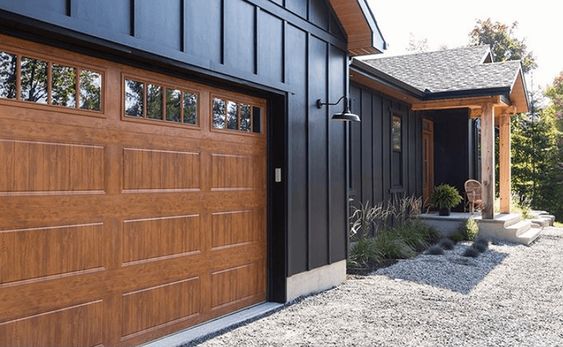As a homeowner, my garage often serves as more than just a space for parking cars. It’s a versatile area that houses tools, serves as a workshop, and even doubles as a home gym. However, with this versatility comes the challenge of maintaining a comfortable and energy-efficient environment. One solution that has made a significant impact on both temperature control and energy savings is the installation of garage door insulation.

In this article, I’ll share the benefits of insulating my garage door based from Garage Door Repair Vancouver WA and guide fellow homeowners through the process, highlighting the transformative effects of this simple yet effective upgrade.
The Benefits of Garage Door Insulation: Beyond Temperature Control
- Temperature Regulation: A Year-Round Comfort Zone
One of the primary reasons I opted for garage door insulation was the desire to regulate the temperature inside the garage. Whether it’s the scorching heat of summer or the bitter cold of winter, an uninsulated garage can become an extreme environment, impacting not only my comfort but also the condition of items stored within.
Garage door insulation acts as a barrier, preventing the transfer of heat between the interior and exterior of the garage. This regulation creates a more temperate environment, making the space usable throughout the year. During hot summers, insulation helps keep the garage cool, while in winter, it provides a buffer against the cold, making the area more conducive to various activities.
- Energy Efficiency: Saving on Heating and Cooling Costs
Beyond the immediate comfort benefits, garage door insulation contributes to overall energy efficiency. An insulated garage helps retain the conditioned air, whether it’s warm or cool, for longer periods. This means that my home’s heating and cooling systems don’t need to work as hard to maintain a comfortable temperature, resulting in energy savings and reduced utility costs.
The insulation acts as a thermal barrier, minimizing the impact of external temperatures on the garage space. This translates to less energy required to heat or cool the garage, creating a more sustainable and cost-effective solution for homeowners.
- Noise Reduction: Creating a Quieter Environment
An unexpected but appreciated bonus of garage door insulation is the reduction in noise transmission. Whether it’s the sound of rain on the roof, street traffic, or the hum of a lawnmower outside, insulated garage doors help dampen external noises. This noise reduction creates a quieter and more peaceful environment inside the garage, making it a more enjoyable space for various activities.
The insulation material absorbs sound waves, preventing them from bouncing around and amplifying noise. This benefit is particularly valuable for homeowners who use the garage for activities that require concentration or those who simply want to create a more tranquil atmosphere.
- Protection for Belongings: Safeguarding Against Extreme Conditions
Many homeowners use the garage as storage for valuable items such as tools, sports equipment, or seasonal decorations. Extreme temperatures can adversely affect the condition of these belongings. Insulating the garage door provides an additional layer of protection against temperature extremes, helping preserve the integrity and functionality of stored items.
By creating a more stable and controlled environment, garage door insulation minimizes the risk of damage to sensitive items. This protection is especially crucial for items susceptible to temperature fluctuations, such as paints, adhesives, or electronic equipment.
The Insulation Process: A Step-by-Step Guide
Now that we’ve explored the benefits of garage door insulation, let’s delve into the step-by-step process of installing it. While some homeowners may choose to hire professionals for the installation, I found that the process is manageable as a DIY project, provided you follow these guidelines:
Materials Needed:
- Garage door insulation kit
- Tape measure
- Straightedge or ruler
- Utility knife
- Adhesive or double-sided tape
- Safety glasses and gloves
Step 1: Measure and Assess
Start by measuring the dimensions of each garage door panel. Most insulation kits come in standard sizes, but it’s essential to ensure that the chosen kit matches the size of your garage door panels. Additionally, assess the condition of the garage door and address any repairs or maintenance issues before proceeding with the insulation.
Step 2: Choose the Right Insulation Kit
Garage door insulation kits are available in various materials, including foam board, reflective foil, and batt insulation. Consider factors such as R-value (thermal resistance), ease of installation, and budget when selecting the right kit for your needs. Foam board insulation is a popular choice for its effectiveness and ease of installation.
Step 3: Cut Insulation Panels
Using the measurements from step 1, use a straightedge or ruler to mark the dimensions on the insulation panels. Use a utility knife to cut the panels to the appropriate size. Ensure precision during this step to achieve a snug fit for each panel on the garage door.
Step 4: Clean and Prepare the Garage Door
Before attaching the insulation panels, thoroughly clean the garage door panels to remove any dust, debris, or grease. This ensures a secure bond between the insulation and the door surface. If the garage door has raised panels, consider attaching the insulation to the flat sections for a neater appearance.
Step 5: Apply Adhesive or Tape
Most garage door insulation kits come with adhesive or double-sided tape for attachment. Apply the adhesive or tape along the edges of each insulation panel. Take care to follow the manufacturer’s instructions regarding the placement and spacing of the adhesive to ensure a secure and lasting bond.
Step 6: Attach Insulation Panels
Carefully align each insulation panel with the corresponding garage door panel and press it firmly into place. Ensure that the edges are securely attached, creating a sealed barrier against air infiltration. Repeat this process for each garage door panel, working systematically to achieve uniform coverage.
Step 7: Trim Excess Insulation
After attaching all the insulation panels, there may be excess material along the edges or corners. Use a utility knife to trim any excess insulation, ensuring a neat and tidy appearance. Take caution during this step to avoid damaging the garage door or the insulation.
Step 8: Test the Garage Door
Once the insulation is securely in place, test the operation of the garage door. Ensure that the insulation does not interfere with the smooth movement of the door. Check for any signs of misalignment or resistance, and make adjustments as needed.
Conclusion: Transforming the Garage into a Comfortable Space
Installing garage door insulation has proven to be a transformative home improvement project. The benefits of temperature regulation, energy efficiency, noise reduction, and protection for stored items have elevated the functionality and comfort of my garage. The straightforward process of installing insulation panels, whether as a DIY project or with professional assistance, is a relatively simple yet impactful investment in the overall well-being of my home.
As stated in Garage Door Repair Vancouver WA and as a homeowner, the garage is no longer just a utilitarian space; it has become a comfortable and energy-efficient extension of my home. The decision to insulate the garage door has not only improved the usability of the space but has also contributed to long-term energy savings and enhanced the overall value of my home. Whether you utilize the garage for work, play, or storage, the installation of garage door insulation is a practical and rewarding endeavor that redefines the possibilities of this often-underestimated area of the home.
Ryder Garage Doors
PO Box 5474 Vancouver, WA 98668
360-843-7981





